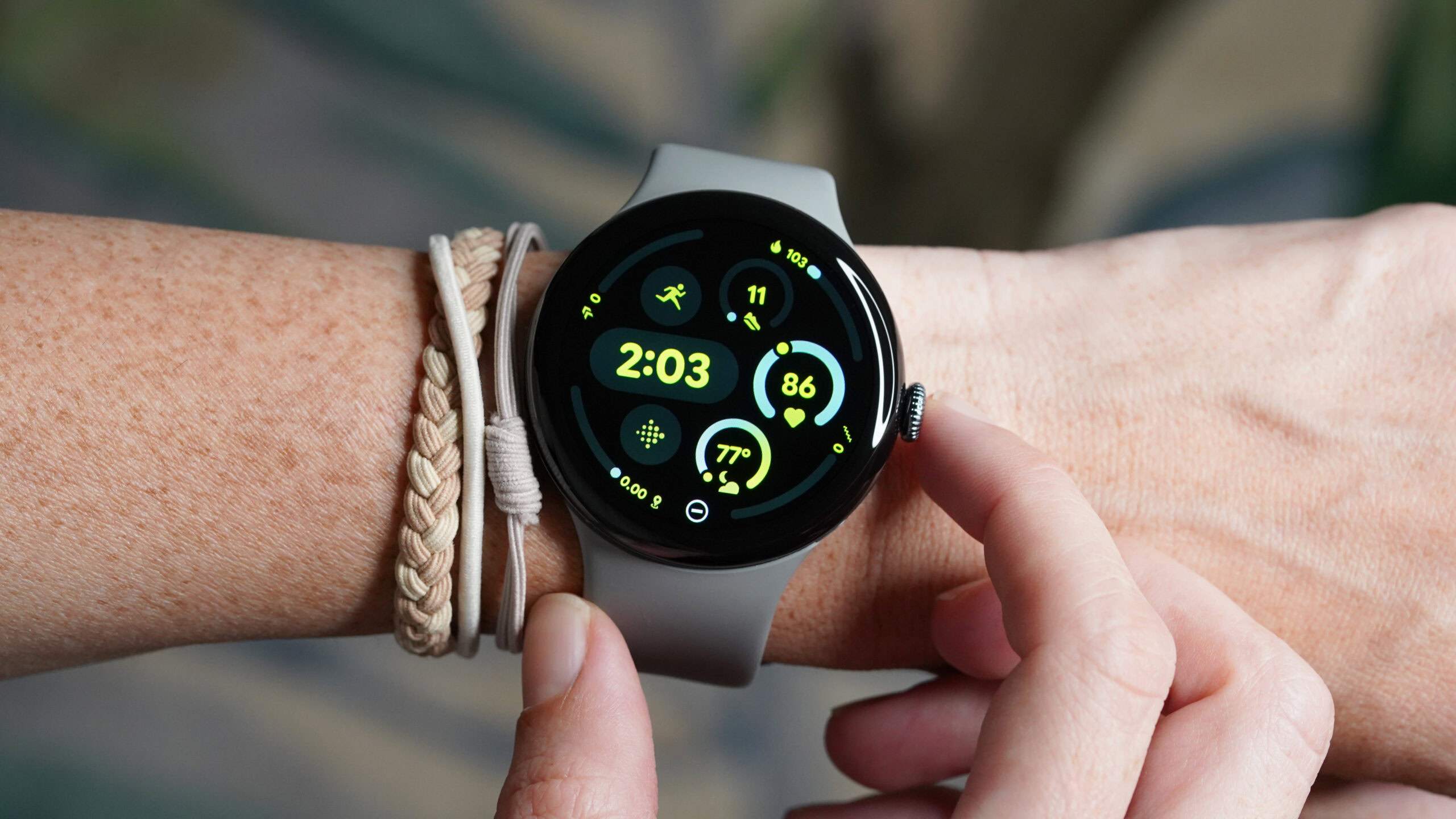Earlier this month, Google quietly confirmed that its three Pixel Watch models would see a significant delay before their next software updates. Specifically, the next scheduled update isn’t coming until March 2025 — roughly five months from the time of Google’s announcement. Naturally, many Pixel Watch, Pixel Watch 2, and Pixel Watch 3 users responded negatively to this news, as a lack of updates for several months means no new features and, more importantly, no security fixes.
An adverse reaction to this makes sense. After all, we discovered this schedule change as the Wear OS 5 rollout started up again for the Pixel Watch and Pixel Watch 2 after a disastrous rollout attempt a few weeks prior. It is logical to assume that more updates would be better for Google’s best smartwatches, not fewer.
However, I am actually pretty happy about this. Yes, I’m slightly disappointed as I enjoy the excitement of getting a new update every month, but overall, delayed update rollouts are probably Google’s best strategy for smartwatches.
Are you happy about less frequent Pixel Watch updates?
54 votes
Google Pixel Watch updates: What is happening?
Kaitlyn Cimino /
On September 24, 2024, Google started the rollout of Wear OS 5 to the first Pixel Watch and the Pixel Watch 2 (the Pixel Watch 3, launched a little over a month prior, had Wear OS 5 out of the box). Unfortunately, many users saw significant issues with the update, including their watches suddenly becoming unresponsive. Thankfully, it was possible to roll back this update — Google posted a guide for doing just that — but the company quickly pulled the plug on the Wear OS 5 rollout regardless. It would be over a month before Google would begin the process again on November 12. This time, no major issues were reported.
Google faced a major issue with its Wear OS 5 rollout, and then quietly slashed its update schedule down in response.
However, a very brief mention was included with the announcement of that second Wear OS 5 rollout: “…the next update [is] planned for March 2025.” Google did not explain this five-month delay between this update and the next. It also didn’t confirm if that would be the new schedule or if this was just a one-time delay. All we know is that the November update — which included the November 2024 security patch for all watches and the Wear OS 5 update for the two original Pixel watches — would be the last one we see for a few months.
Clearly, Google’s original Wear OS 5 rollout in September did not go well, and this new months-long update break is almost certainly a response. But was this the right move? I think it was.
Why is this a good thing?
C. Scott Brown /
A man pressed the digital crown of his Google Pixel Watch 3.
While it’s been great that, regarding updates, Google treated the Pixel Watch line the same way it would a Pixel phone, there’s no arguing that a watch is very different from a smartphone. It simply doesn’t need that same level of attention since it’s not a standalone device. Sure, you can use it without a smartphone, but most people reading this use their smartwatch as a sidecar for their phone, making it inherently secondary in their lives. Smartwatches are also far less prone to hacks and security breaches due to their secondary nature, so constant security patches aren’t nearly as necessary as they are for phones. With all this in mind, Google treating watch updates with the same urgency and importance as phone updates never made much sense.
Also, the updates were never that hefty to begin with. I’ll openly admit that I’m always excited about getting the latest software version of anything, but on my Pixel Watch, those have rarely included anything interesting. Most of the time, it’s just a few security patches, which, from a user-facing perspective, is the very definition of boring. Even the quarterly Pixel Drops only included a handful of new features. Most recently, in the October Pixel Drop, the Pixel Watch 3 got exactly three new features: a new Tile for contacts, the ability to react to messages with Emoji, and a broader rollout of the Loss of Pulse Detection feature. Those are all good, for sure, but they are hardly life-changing. I installed the update and went about my day, barely even thinking about it.
Google seems poised to focus on quality over quantity with Pixel Watch updates. How could that not be great news?
Google delaying update rollouts will allow it time to make updates more substantial. Instead of several pretty minor updates, we might get more than that each time, with one or two maybe even being significant. It also gives Google the time to develop new features users really care about, such as the addition of new watch faces (a very common request).
Additionally, Google having more time should hopefully mean fewer problems with those updates. I’ve already talked about the Wear OS 5 fiasco, but that’s not the only update-related problem Pixel watches have faced. The June rollout came with a significant battery drain bug, which Google fixed in the July update. We also saw Google roll out a notification for your phone when your watch’s battery has reached 100% charge earlier this year, only for the company to take it away inexplicably — and then bring it back a few months later. If Google’s teams hadn’t been so pressed for time to get the monthly update out the door, snafus such as these might have been avoided.
In other words, Google having more time should hopefully result in more substantial updates that are less likely to create more problems than they fix. How could that not be a good thing?
OK, this might be good, but how long will it last?

Kaitlyn Cimino /
As I mentioned earlier, we know that Google has paused its update schedule until March 2025. That is around the time when we expect the first Pixel Drop of the year. Theoretically, that would mean a Pixel Drop for smartwatches half a year in the making, which would certainly be exciting. I can only hope Google is cooking something extraordinary for us then.
Google has over five months to make a whopper of an update, and I hope it delivers.
However, what happens after that is anyone’s guess. Will Google go back to monthly updates? I don’t think it needs to. I would be fine with Google sticking to a quarterly update schedule for all its smartwatches. I’d much rather get interesting, stable upgrades four times a year than get sloppy, insignificant updates every month.
The only real issue here is security. Only a few days after Google announced it would hold off on updates until March, we saw reports of a Wear OS bug related to Android 15’s Private Space feature. Basically, some notifications from Private Space apps could appear on your watch, which could be problematic in some cases. As of now, Google has acknowledged the problem but hasn’t announced a fix nor when we can expect that to land. This is an excellent argument for the monthly security update camp.


Google Pixel Watch 3
Larger, secondary case size • Multi-day battery life • Accurate heart rate tracking
Two sizes, better than ever.
The Google Pixel Watch 3 comes in 41mm and 45mm sizes, and each size comes in Wi-Fi or LTE options. They all come with improved activity and fitness tracking, thinner bezels, and Wear OS 5.
Personally, I’m not really concerned about this. The Private Space bug is not great, but it’s also not that dangerous, either. I am confident that if some out-of-control security hole were discovered in any Pixel Watch, Google would push out a fix as soon as possible, regardless of its frequency schedule. But, going back to what I said before about the very nature of smartwatches, there just aren’t that many security concerns to have with a Pixel Watch, so I would expect this to be an uncommon experience.
As tech fans, I think we need to be less focused on update schedules across the board. Once again, I openly admit that I get excited every time a gadget I own has a pending update, so I understand the desire to get them often and reliably. However, I’ll take quality over quantity any day of the week.











